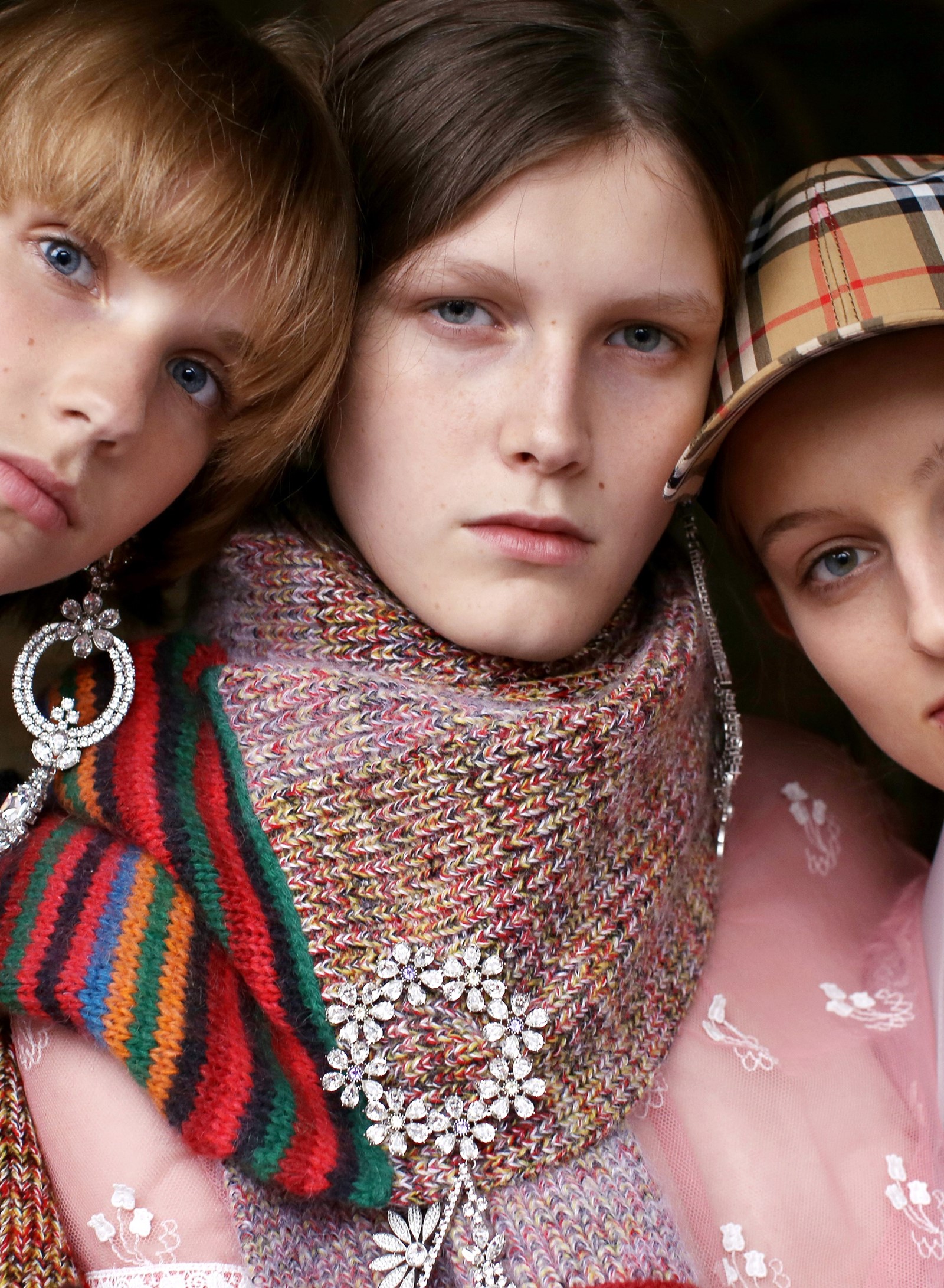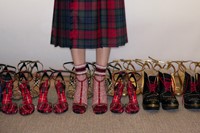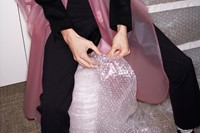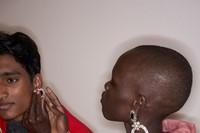Aristocrat meets working class, Kensington mews meet Arsenal terraces, east-end boys meet west-end girls. There’s a tidy and simple summary of a not-so-tidy and satisfyingly complex Burberry show, a treatise on class and how it dresses – or, perhaps, how to dress it and address it.
Basically, we’re talking lady and the tramp – or rather, posho and the chav. Burberry’s signature house check – in red, black and white on a camel background – became a prime signifier of that much-maligned working class subculture back in the early 00s. It was criticised and fetishised in equal measure, the latter not limited to the fashion sense of the word (there are a number of adult movies where Burberry’s check – both the real deal and its many counterfeit imitators – make cameo appearances alongside the real action). Of course, it started on the catwalk well before, tapping into the era’s craze for logomania which is currently seeing a revival elsewhere (Gucci’s double-G monogram and Dior’s logo denim have also been recently exhumed). But Burberry’s check meant something more – it was detached from fashion, and became symbolic of an entire subculture.
In actual fact, the Burberry check has symbolised two – first seized upon by Casuals, football fans whose 24/7 sportsgear get-ups gave them that name, in the 80s. Burberry’s check represented, visually and vibrantly, a certain wealth and status working-class kids could only aspire to, and they begged, borrowed and often stole to outfit themselves in the desired fashion.
That’s a lot of cultural luggage attached to a tartan print – yet it could easily have been washed over if the resulting styles were too fashion, or indeed fashioned. But Christopher Bailey is both clever and honest; working class himself (born in Halifax, his dad was a carpenter, his mother a window dresser for Marks and Spencer), he drew on authentic styles seen back in the 80s and the 00s, and celebrated rather than appropriated their roots in subcultures. Chavs and Casuals were the dominant references, but they mixed with plenty of others – Sloane Rangers and Young Fogies in knitted vests and Burberry check trench coats; and punks, originally known as ‘plastic peculiars’ and here clad in true tartans (Black Watch and Royal Stuart) and rubberised mackintoshes, semi-sheer like the condom-like “Rubber Johnny” T-shirt and bodysuits Vivienne Westwood and Malcolm McLaren used to sell (and, sometimes, sport) at their shop SEX on the King’s Road.
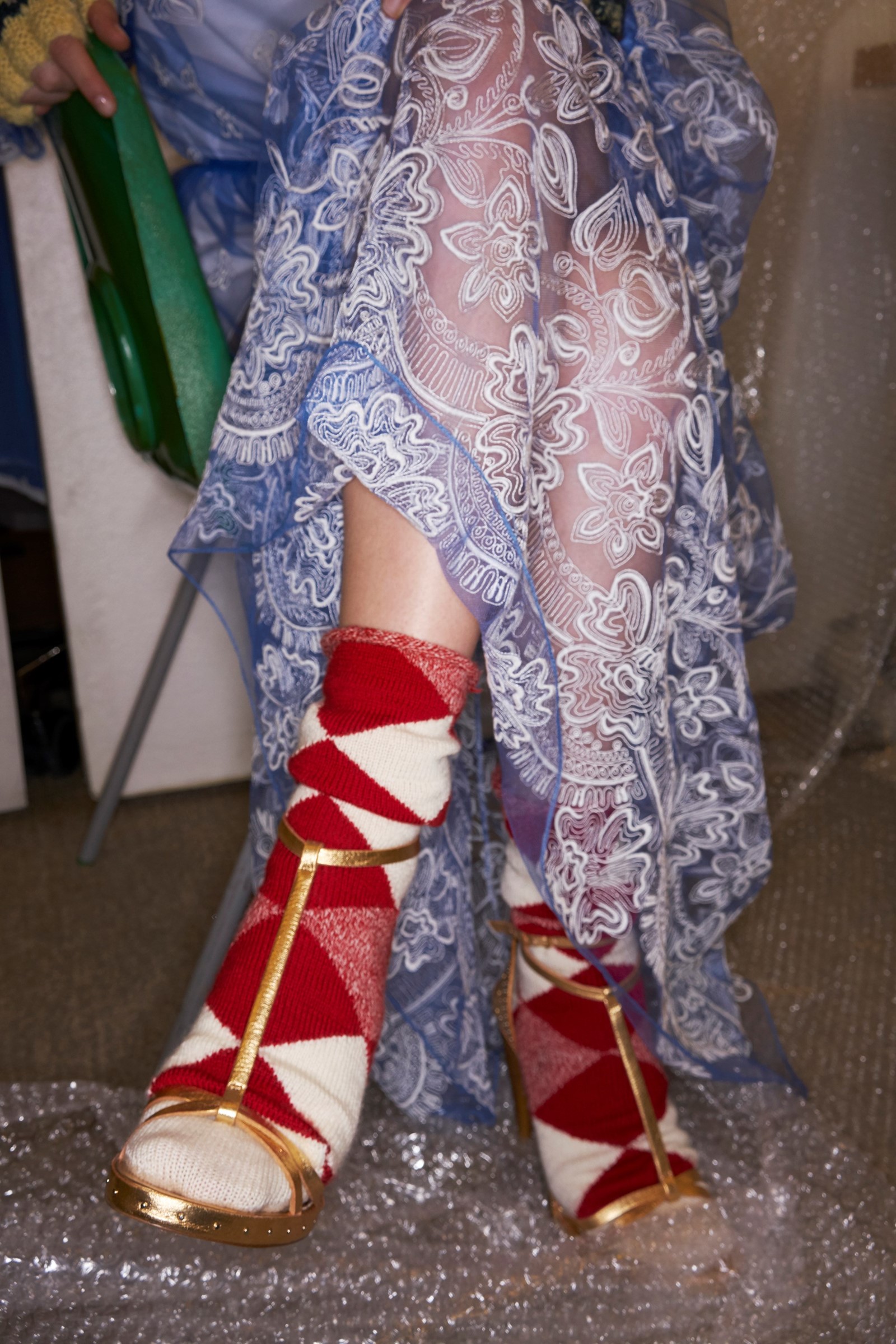
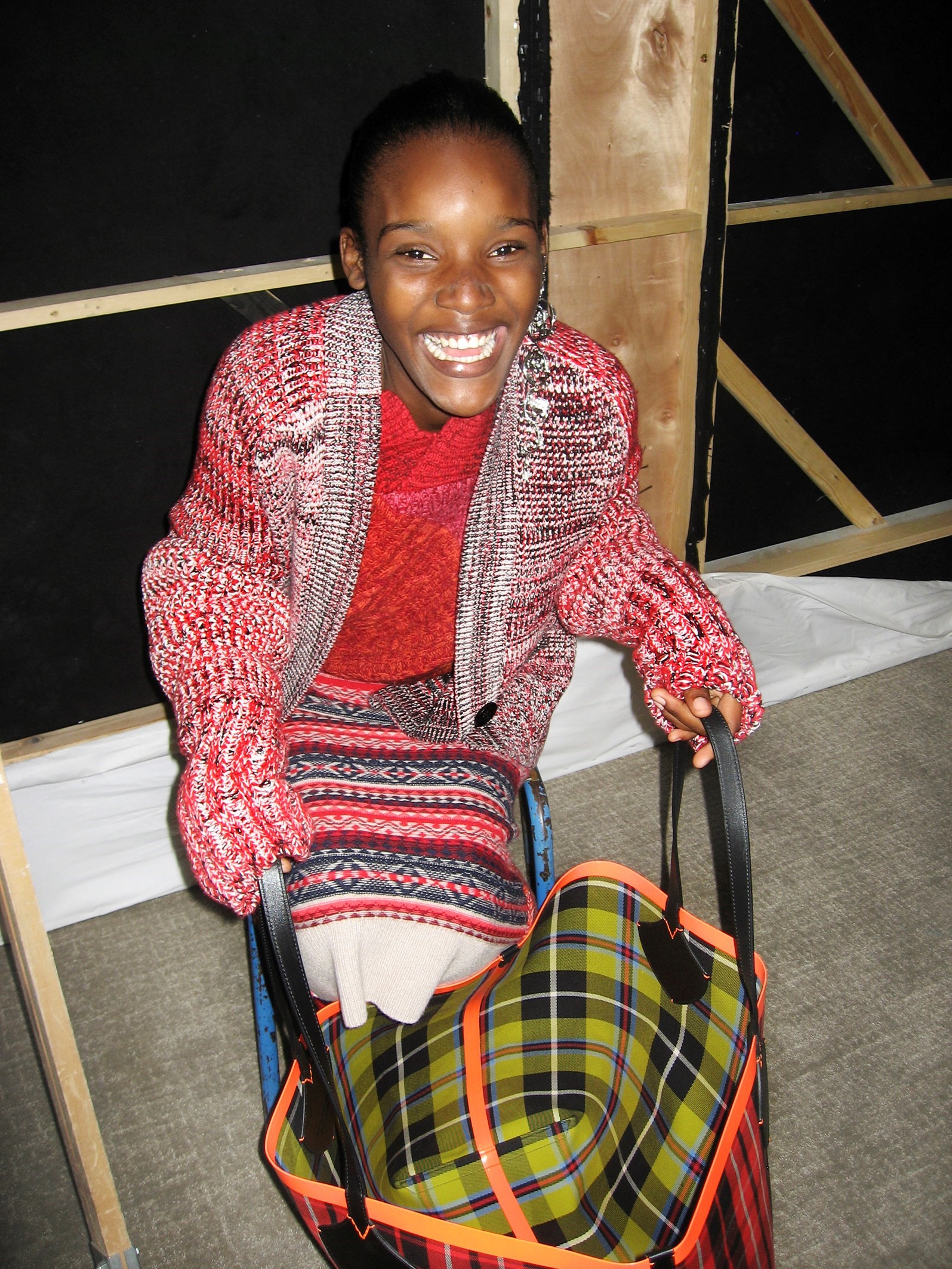
Bailey’s Burberry collection mixed the references together, so a horsey sloane may have her stock-collared shirt in a sheer, plasticky polyurethane under her Fair Isle vest, and a punk could be wearing a debutante-style diamanté earring on one ear above his tartan great-coat. Burberry isn’t a label of latent social rebellion, even if it has dressed a few of the aforementioned. Which is why this show didn’t strike you as a pointed social commentary. Rather it was an unexpected love affair between different subsects and cults – punks getting off with princesses, Casuals with chavs.
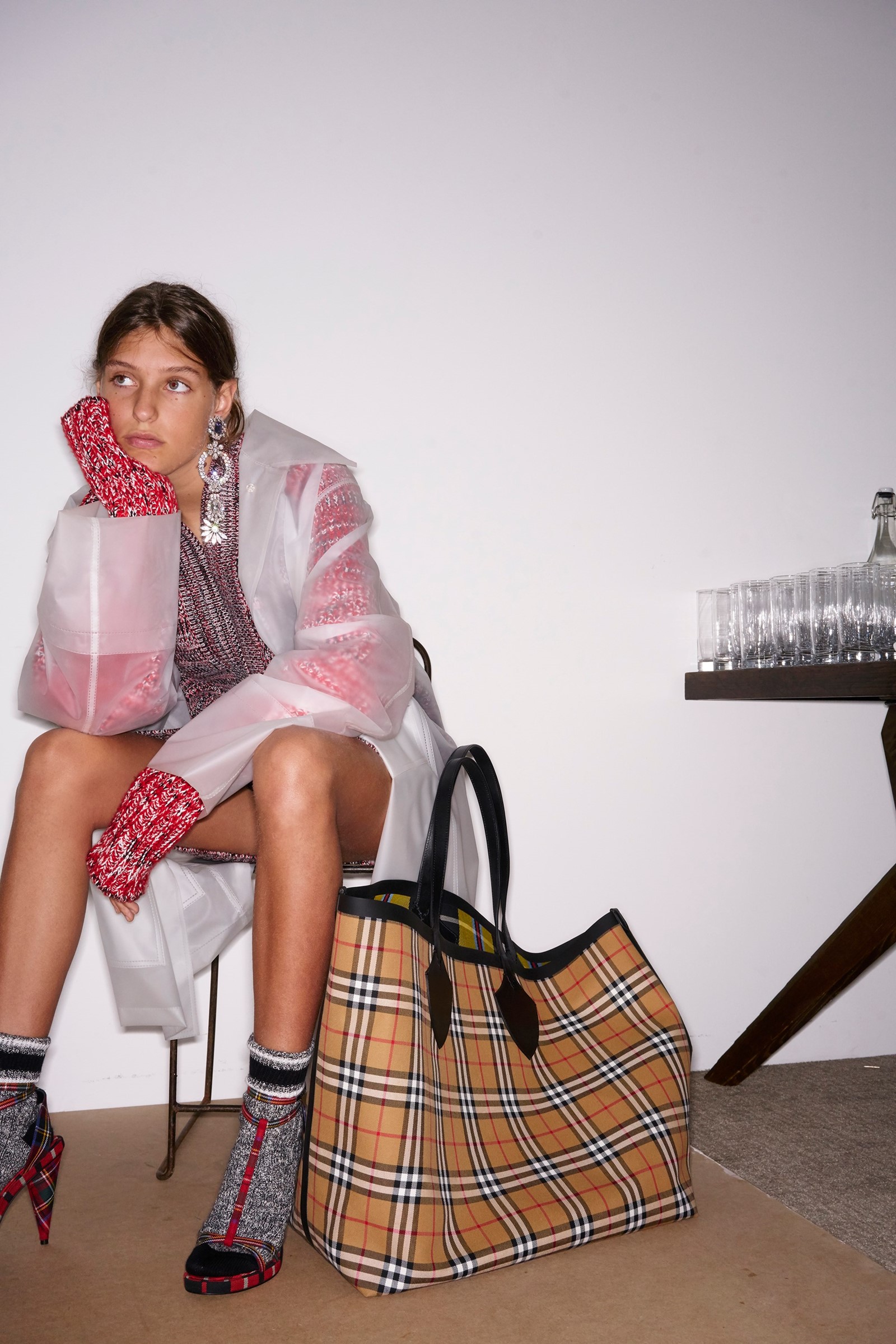
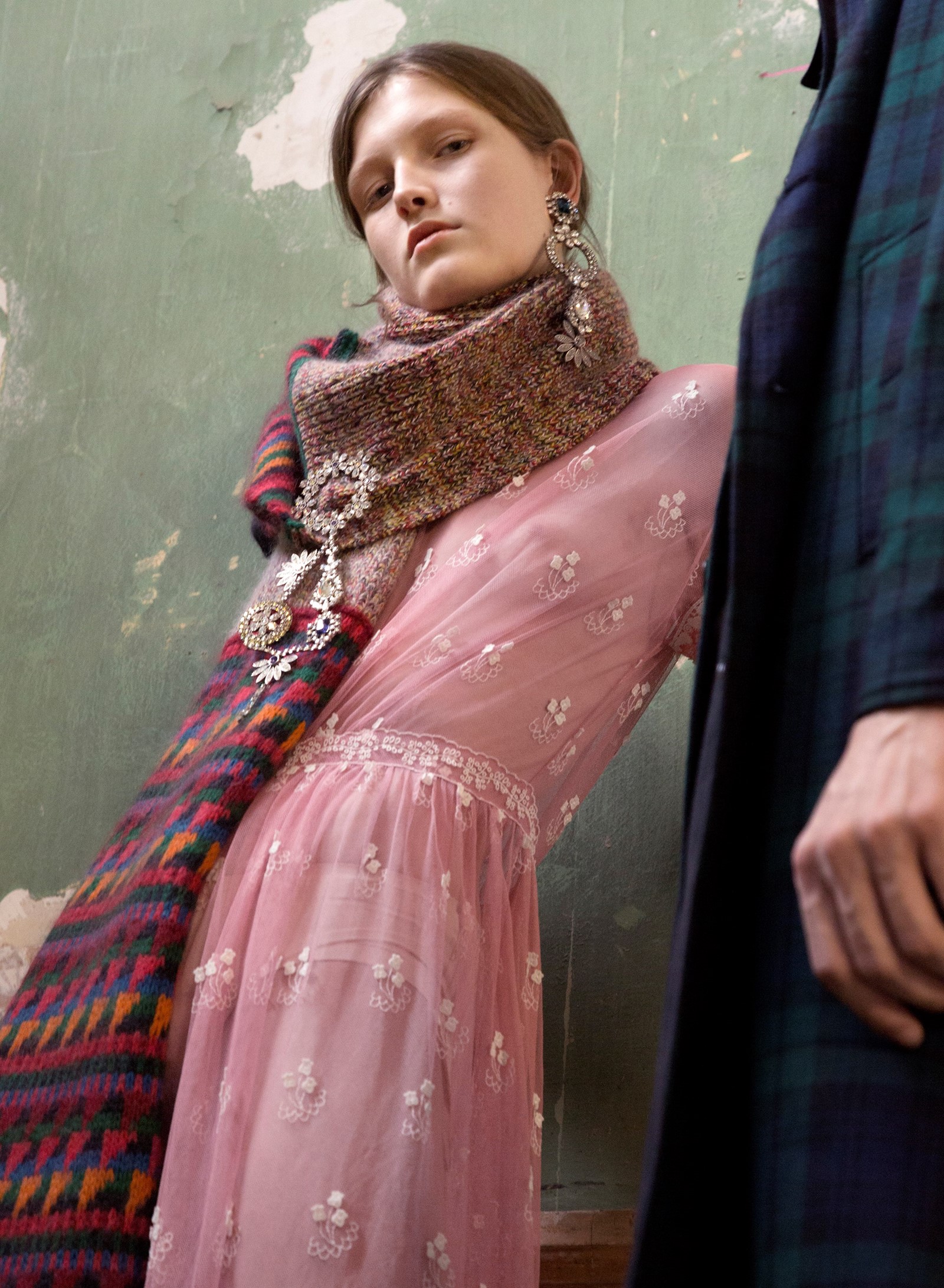
How to dress and address class? In today’s society, maybe Bailey and Burberry were making a point about classlessness – as a positive, rather than a pejorative. It wasn’t that this Burberry show was free of class consciousness – it had plenty – but it also offered a class mobility. Pick a style tribe, and dress it, regardless of where you come from. It wasn’t about pseudo style, though; the overriding take away from this Burberry show was how honest it was, how true. True to the style of each of the subcultures riffed and referenced, and true to Burberry, too. It was a return to roots. And all the better for it. Honesty is, evidently, the best policy.
